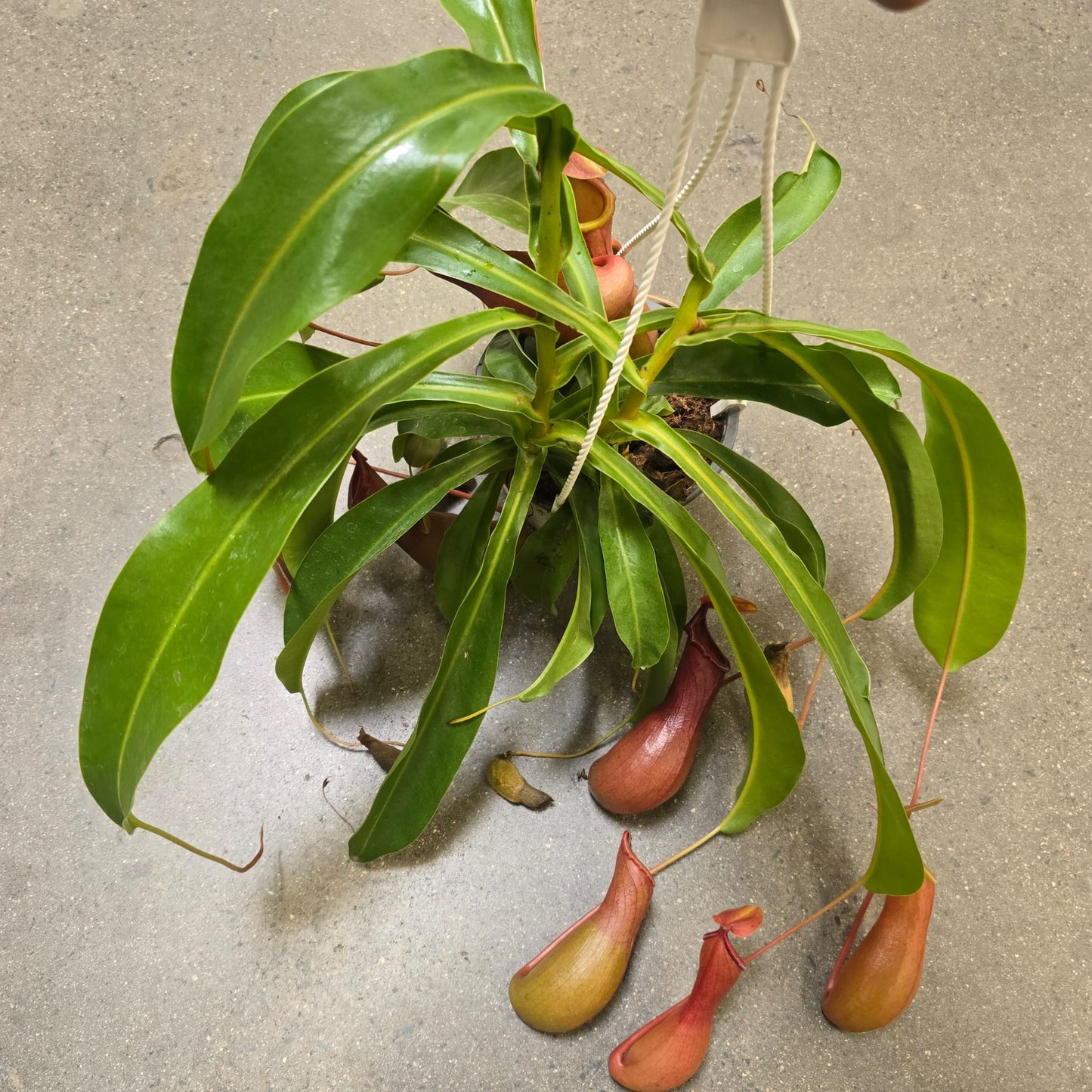Couldn't load pickup availability
Nepenthes × ventrata in hanging basket carnivorous plant Easy care 6 inch pot
Nepenthes × ventrata in hanging basket carnivorous plant Easy care 6 inch pot
Nepenthes × ventrata is a naturally occurring hybrid pitcher plant endemic to the Philippines. It is the result of a cross between Nepenthes graciliflora and Nepenthes ventricosa.
Here are some key characteristics and care tips for Nepenthes × ventrata:
Characteristics:
* It's considered one of the most beginner-friendly Nepenthes due to its adaptability and ease of growth.
* The pitchers are typically elongated and often have a red or orange hue, especially when exposed to bright light.
* The peristome (the colorful, often ribbed or toothed rim of the pitcher opening) is usually well-defined and richly colored.
* It tends to grow relatively quickly.
* It can readily devour insects like ants, gnats, and mosquitoes.
Care:
* Light: Bright, indirect light is ideal. An east or west-facing window or a greenhouse with about 50% shade cloth works well. The leaves may develop an orange to red tint with sufficient light. Avoid intense, direct sunlight, especially during the summer, as it can burn the leaves. Artificial grow lights can also be used.
* Water: Use non-calcareous water such as rainwater, distilled water, or reverse osmosis water. Keep the soil consistently moist but not waterlogged. Water from the top, allowing excess water to drain. Avoid letting the pot sit in standing water. You can mist the plant occasionally to increase humidity.
* Humidity: Nepenthes × ventrata tolerates a wider range of humidity levels compared to some other Nepenthes species, but it thrives in humidity of 60% or higher. Misting can help if the humidity is low.
* Temperature: Daytime temperatures of 70-80°F (21-27°C) and a slight nighttime drop of about 10°F (6°C) are beneficial. Avoid temperatures below 60°F (15°C).
* Soil: Use a light and well-draining substrate specifically formulated for carnivorous plants. A common mix is sphagnum moss or peat with perlite, vermiculite, or non-limestone sand. Avoid regular potting soil, as it contains minerals that can harm Nepenthes.
* Repotting: Repotting is generally not needed frequently, as Nepenthes don't mind being slightly root-bound. Repot in the spring if the plant becomes unstable, roots are growing out of the drainage holes, or the soil is breaking down.
* Feeding: While they can trap their own food, you can occasionally feed the pitchers with small insects (live or dead), cricket powder, or fish food. Avoid feeding them meat. Some growers use diluted Maxsea fertilizer as a foliar feed or add Osmocote pellets to the pitchers sparingly.
* Pruning: Trim away completely dried pitchers or brown leaves with clean scissors or pruning shears to encourage new growth.
Nepenthes × ventrata is a popular choice for both beginners and experienced carnivorous plant enthusiasts due to its attractive appearance and relatively easy care requirements. It's also commonly available in garden centers, sometimes mislabeled as Nepenthes alata (which is now considered Nepenthes graciliflora).
Get a Similar or better plant(s) than the pictures! 📷
Heatpack is included if needed, i'll check your local weather when it comes to ship it, it will also depend on the plant family. Example: Alocasias, philodendrons, monsteras.
Weather: Plant will be safely packed, even heavy 20 lb+ plants make it safe to anywhere in USA
Shipping: Handling time is from 2-6 days, transit time 1-3 days.
Quality: The picture is a sample of a good quality plant, you'll receive the same or even better!
Guarantee: Safe arrival is guaranteed, if the're any problem, please email the pictures and we'll find the best solution, replacement if the plant is heavily damaged (very rare case).
Thank you for your support!
Share


